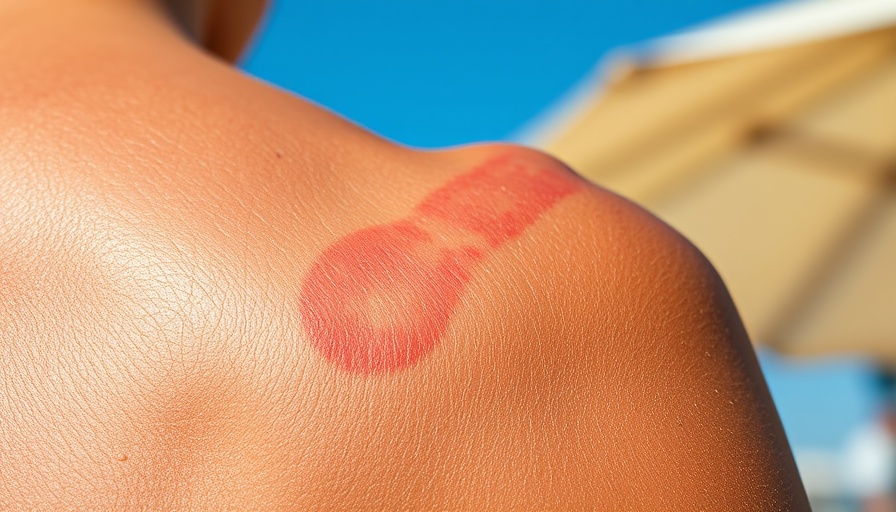
Sunburn: An All-Too-Common Summer Woe
As the summer sun beckons us outdoors, whether basking on the beach or hiking through trails, sunburn can sneak up on us, turning a delightful day into a painful ordeal. Affecting individuals of all ages, it's crucial to familiarize ourselves with how to effectively treat sunburn, transforming discomfort into relief. After all, those sun-kissed days shouldn't end in misery.
Understanding Sunburn and Its Effects
Sunburn occurs when the skin is overexposed to ultraviolet (UV) rays from the sun. These harmful rays penetrate the skin, damaging cells and leading to inflammation. Symptoms can range from redness and swelling to severe pain and peeling. According to dermatologists, treating sunburn promptly can ease pain and expedite healing.
Essential Treatments for Swift Relief
One of the most crucial steps in treating sunburn is to cool the affected area. Experts recommend taking a cool bath or shower to reduce temperature and alleviate redness. Avoid hot water as it can worsen irritation. Afterward, applying a gentle moisturizer or aloe vera can profoundly soothe the skin.
Hydration is equally essential; drinking ample amounts of water fosters your body’s healing process. Staying adequately hydrated replenishes fluids lost during sun exposure and helps combat the dryness of sunburned skin.
Oral Medications for Unbearable Pain
If the sunburn pain becomes overwhelming, over-the-counter medication can be a game-changer. Ibuprofen or aspirin can alleviate discomfort and inflammation effectively. However, it’s advisable to consult with a healthcare professional before mixing medications if you've any existing conditions.
Natural Remedies Worth Considering
For those leaning toward holistic approaches, several natural remedies can complement your sunburn treatment. Ingredients like chamomile, calendula, and even peppermint oil may provide additional cooling effects. These remedies, often found in health and wellness communities, are rich in healing properties that can accelerate recovery.
When to See a Doctor: Red Flags
While most sunburns can be treated at home, some symptoms require medical attention. Blisters, severe pain, swelling that worsens, or fever can indicate a more serious reaction. This serves as a critical reminder to prioritize skin protection and be attentive to your body’s signals.
Protect Yourself: Prevention Strategies
Preventing sunburn is often easier than treating it. Remember to apply a broad-spectrum SPF of at least 30 before heading out, reapplying it every two hours, especially after swimming or sweating. Wearing protective clothing and seeking shade during peak hours can drastically reduce the chances of sunburn.
The Cultural Shifts in Skin Health Awareness
Encouraging a proactive approach to sunburn reflects a broader societal shift toward health and wellness. Many communities, especially in cities like San Antonio, promote educational events and discussions that empower residents to take charge of their skin health. The prevalence of discussions around natural remedies and holistic healthcare exemplifies the evolution of our understanding of health.
Embrace the Future of Holistic Skin Health
As we integrate research and experiences collectively, the understanding of how to treat conditions like sunburn is evolving. Engaging with local health and wellness businesses focused on fostering optimal health not only enriches individual lives but strengthens community ties. Taking ownership of our health journey inspires others and cultivates a culture of well-being.
In conclusion, understanding how to treat sunburn effectively is integral to enjoying outdoor adventures without repercussions. By equipping ourselves with knowledge and resources, we embrace a lifestyle that values both health and enjoyment. For a deeper dive into health and wellness, be part of local health events and discover strategies that resonate with your journey toward optimal health.
 Add Element
Add Element  Add Row
Add Row 



 Add Row
Add Row  Add
Add 


Write A Comment